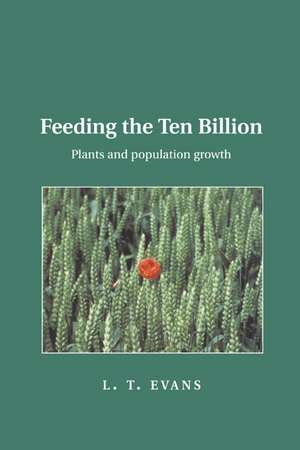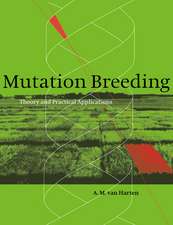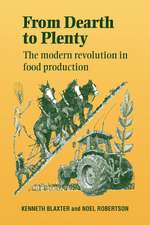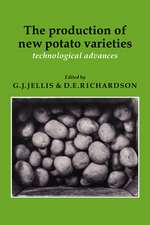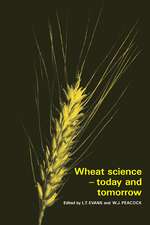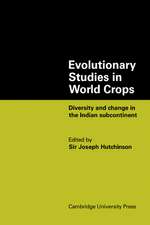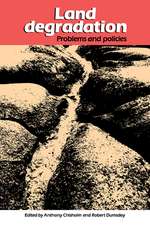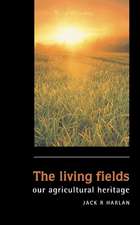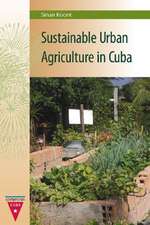Feeding the Ten Billion: Plants and Population Growth
Autor Lloyd T. Evansen Limba Engleză Paperback – 4 noi 1998
Preț: 372.97 lei
Nou
Puncte Express: 559
Preț estimativ în valută:
71.37€ • 74.71$ • 59.05£
71.37€ • 74.71$ • 59.05£
Carte tipărită la comandă
Livrare economică 05-19 aprilie
Preluare comenzi: 021 569.72.76
Specificații
ISBN-13: 9780521646857
ISBN-10: 0521646855
Pagini: 264
Ilustrații: 32 b/w illus.
Dimensiuni: 152 x 229 x 15 mm
Greutate: 0.39 kg
Ediția:New.
Editura: Cambridge University Press
Colecția Cambridge University Press
Locul publicării:Cambridge, United Kingdom
ISBN-10: 0521646855
Pagini: 264
Ilustrații: 32 b/w illus.
Dimensiuni: 152 x 229 x 15 mm
Greutate: 0.39 kg
Ediția:New.
Editura: Cambridge University Press
Colecția Cambridge University Press
Locul publicării:Cambridge, United Kingdom
Cuprins
Preface; Acknowledgements; 1. Introduction: timebomb or treadmill?; 2. Reaching five million (to 8000 BC); 3. Towards fifty million (8000 BC–2000 BC); 4. The first half billion (2000 BC–1500 AD); 5. The first billion (1500–1825); 6. The second billion (1825–1927); 7. The third billion (1927–1960); 8. The fourth billion (1960–1975); 9. The fifth billion (1975–1986); 10. The sixth billion (1986–1998); 11. What the world eats now; 12. Feeding the ten billion; Epilogue; References; Acronyms and abbreviations; Index.
Recenzii
'I recommend this book unequivocally to everyone.' David W. Lawlor, Annals of Botany
'Feeding the Ten Billion: Plants and Population Growth aims to understand how the evolution of agriculture has both shaped and been shaped by the course of world population growth. Evans, a distinguished plant physiologist and a former President of the Australian Academy of Sciences, achieves this aim by describing the past interactions of population and agriculture.' Trends in Ecology and Evolution
'If you wish for a masterly, gripping, fluent, flowing analysis of the whole problem of food and population, scientifically rigorous yet literary, almost journalistic, then read this book. Such a balance of history, sociology and agricultural and plant science is rare.' David W. Lawlor, Annals of Botany
'Indeed, even if you do not wish to read this book, you should: it is essential reading for all - from school to the highest academia, but especially for 'opinion formers' and 'decision makers' in politics and industry.' David W. Lawlor, Annals of Botany
'The book is enjoyable reading and I recommend it to anyone interested in a refresher course on how plant research has interacted with population growth.' Gary Toenniessen, Trends in Plant Science
'All students of soil science, and many other scientists, could widen their horizons from this absorbing book.' A. Young, European Journal of Soil Science
'Most plant biologists should come away from reading this book with a better sense of world agriculture in terms of where we are today, how we got there, and the constraints that will drive its development over the next 50 years.' James N. Siedow, Plant Physiology
'Feeding the Ten Billion: Plants and Population Growth aims to understand how the evolution of agriculture has both shaped and been shaped by the course of world population growth. Evans, a distinguished plant physiologist and a former President of the Australian Academy of Sciences, achieves this aim by describing the past interactions of population and agriculture.' Trends in Ecology and Evolution
'If you wish for a masterly, gripping, fluent, flowing analysis of the whole problem of food and population, scientifically rigorous yet literary, almost journalistic, then read this book. Such a balance of history, sociology and agricultural and plant science is rare.' David W. Lawlor, Annals of Botany
'Indeed, even if you do not wish to read this book, you should: it is essential reading for all - from school to the highest academia, but especially for 'opinion formers' and 'decision makers' in politics and industry.' David W. Lawlor, Annals of Botany
'The book is enjoyable reading and I recommend it to anyone interested in a refresher course on how plant research has interacted with population growth.' Gary Toenniessen, Trends in Plant Science
'All students of soil science, and many other scientists, could widen their horizons from this absorbing book.' A. Young, European Journal of Soil Science
'Most plant biologists should come away from reading this book with a better sense of world agriculture in terms of where we are today, how we got there, and the constraints that will drive its development over the next 50 years.' James N. Siedow, Plant Physiology
Descriere
A unique and accessible account of the interaction between population growth and agricultural innovation.
